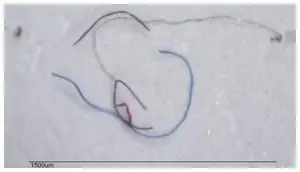.Microfibers: The microplastic causing macro-problems in global waters. . . .
 Micro fibers, often from clothing made from recycled plastic, are a bane of aquatic ecosystems, and the problem is worsening,
Micro fibers, often from clothing made from recycled plastic, are a bane of aquatic ecosystems, and the problem is worsening,
“. . . microbeads aren’t the only plastics problem facing Lake Ontario. In fact, plastic pollution now accounts for 80% of all the waste in the Great Lakes.
One particular type of microplastic has long gone under the radar for years – microfibres.
They’re almost undetectable to the naked eye and smaller than a strand of silk. Tiny synthetic fibres from garments, cleaning cloths, and other consumer products have flooded waterways all over the world.
Like other microplastics, microfibres are too small for wastewater treatment plants to filter out. The consequences for fish – and consumers of fish alike – are grim.
Fish and smaller aquatic life eat microfibres, mistaking the strands for food, accumulate in their stomachs, causing fish to starve. Studies have also shown that ingested plastic has an effect on the reproduction and growth on aquatic life.”
Microfibres are considered the number one microplastics polluter. It is estimated that 1,900 individual fibres are rinsed off per wash – and that’s just from a single, average garment. One fleece jacket can release 250,000 synthetic fibres. A polyester jacket canshed up to 1 million microfibres. “
and
Leave a Reply